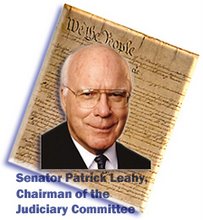O/T: a silver lining in the [re-]segregation cases, today. . .
or, the roadmap drawn by chief justice
john roberts as to "what will be considered
narrowly tailored" in PARENTS INVOLVED
IN COMMUNITY SCHOOLS v. SEATTLE SCHOOL DISTRICT.
i think some of the otherwise fine progressive
blogs are over-stating the breadth of this ruling,
so let me spend a moment here, expressing my dis-
appointment, but also pointing the way forward. . .
update: it seems that the widely-esteemed
scotus blog agrees with me (on the particular
issue of the narrowness of the holding), here. . .
okay -- it is clear, especially given the court's
present make-up -- and it is consistent with
several other recent supreme court opinions -- that
the notion that race alone may be used to diversify
student-bodies, is passing into the night. . .
what is equally clear -- of course -- is the fact
that the pernicious after-effects of racial segre-
gation in education specifically, and racism generally,
are still endemic and wide-spread in american society.
[i note that judge janice rogers-brown, an almost-
fanatical conservative, honored her libertarian
roots earlier in the month and authored a dissent
in a terry stop case. (h/t talkleft.)
she would have held that the race of one stopped,
in the vicinity of a crime committed by a suspect,
allegedly of the same race, taken alone, could
not be enough "articuable suspicion" to justify
even an abbreviated terry stop.
she is right about that, and
that is clearly where the law is headed.]
so -- chief justice roberts offers us this
guidance on how to tailor diversity plans
today, in order to meet the court's more exactingly
precise reading of what "narrowly tailored" means:
. . .Moreover, these cases are not governed by Grutter v. Bollinger, 539 U. S. 306, 328, in which the Court held that, for strict scrutiny purposes, a government interest in student body diversity "in the context of higher education" is compelling. That interest was not focused on
race alone but encompassed "all factors that may contribute to student body diversity," id., at 337, including, e.g., having "overcome personal adversity and family hardship," id., at 338. Quoting Justice Powell's articulation of diversity in Regents of the University of California v. Bakke, 438 U. S. 265, 314-315, the Grutter Court noted that "it is not an interest in simple ethnic diversity, in which a specified percentage of the student body is in effect guaranteed to be members of selected ethnic groups," that can justify the use of race," 539 U. S., at 324,325, but "a far broader array of qualifications and characteristics of which racial or ethnic origin is but a single though important
element," id., at 325. In the present cases, by contrast, race is not considered as part of a broader effort to achieve "exposure to widely diverse people, cultures, ideas, and viewpoints," id., at 330; race, for some students, is determinative standing alone. . .
so -- what the chief justice is telling us is that
using race as only one part of a multi-prong set of
"plus factors", for improving diversity in the
public schools will survive challenge, so long as the
school district can provide evidence of the negative
effects of earlier racial segregation, or make a showing
that the educational experience is enhanced by the
goal of improving diversity. . . and we know there
is plenty of good data, on that score.
so, it is not all bad news. . . the particular case
decided today did not -- at the time the non-admissions
occurred -- have the guidance of the univ. of michigan
law school case to rely upon. that is grutter.
now -- back on topic -- for a busy thursday -- subpoena
defiance underway at the white house, waxman's deadlines
loom, and libby awaits an argument date, or dispositive order.




































































No comments:
Post a Comment